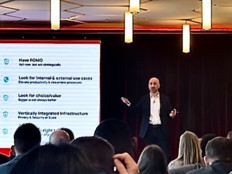“I would recommend looking for options first,” Olson says. “Keep in mind that many firms don’t need full ERP. They might be better served by a transportation management system, warehouse management system or advanced planning system.”
Mickey North Rizza, program vice president for IDC’s Enterprise Applications and Digital Commerce research practice, agrees that many businesses, particularly smaller organizations, may not need a full ERP implementation to be successful.
“If you're a small business — let’s say you’re under 50 employees — the owner is the CEO, and what they care about are their finances,” she says. “They’re also going to care about the workflows that are tied to them: How do they buy stuff? How do they pay the bills? What goes on in the cash world, and how much inventory do they have?”
North Rizza adds that any ERP implementation should allow for growth. Olson, who co-authored Successful ERP Systems: A Guide for Businesses and Executives, observes that it’s important to analyze multiple options to find the best fit.
“If businesses are new to the ERP domain, consultants can help,” he says. “Then customers have a major cost-benefit analysis among the choices they feel fit them.”
EXPLORE: Watch experts discuss how the reimagined workplace will drive businesses.
How to Implement an ERP System
The ERP resource site ERP Focus recommends a seven-step process that includes the following before the implementation project begins:
- Build a project team: The team should include a project manager to oversee the implementation, an application developer to handle customizations, an application analyst to handle data management, and a quality assurance test engineer to handle testing.
- Create a change management plan: This will help manage each of the steps involved.
- Estimate a budget: When projecting how much the transition will cost, keep in mind that more than half of all ERP implementation projects run over budget.
There are also strategic pitfalls to be aware of before starting. A 2017 article in CIO lays out common ERP deployment mistakes and suggests preimplementation considerations should include whether the ERP will be cloud-based, how the business will staff for the process, and how to manage the change within the organization.
ERP Implementation Best Practices
Building a successful team and a well-thought-out implementation plan improve the odds of ERP success, but another key factor is end users. Employees are being asked to take on a significant amount of change, and they can’t be ignored.
Olson says that business process re-engineering — the reshaping of an organization’s workflows and processes — is important to plan for in an ERP implementation. But BPR can take time.
“BPR is good in that it involves improved methods, usually enabled by the software,” he explains. “But it changes how everybody does their job, which leads to a painful initial break-in period. Organizations need to gauge how soon they can get over this break-in period and get to the benefit part. I recommend a net present value analysis, although I admit that reliable numbers are hard to get.”












